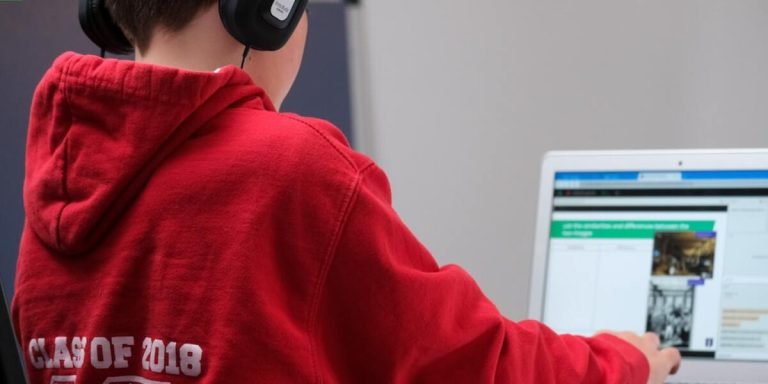Middle Schools: Understanding Their Pivotal Role in Childhood Education
Diving directly into the world of middle schools, it’s safe to say they function as a vital bridge in our educational system. They connect elementary education and high school, serving an often overlooked but pivotal role in shaping young minds during some of their most impressionable years. The experiences and teachings given at this stage can leave lasting impressions that dictate students’ perception about learning for the rest of their lives.
A deeper understanding of Middle School Education aids parents and educators alike by shedding light on its significance within childhood education. By comprehending not just how these institutions operate, but also appreciating why they exist – we can start to see what makes them so integral. In truth, highlighting the importance is more than acknowledging academic growth; it’s recognizing emotional development along with societal interactions each student goes through during these crucial years.
Did you know?
Did you know that middle school education, typically for ages 11-14, is crucial because it bridges the gap between elementary and high school? This transitional period often determines a student’s future academic success.
The Role of Technology in Enhancing Middle School Learning Experiences
The role of technology in enhancing middle school learning experiences is becoming increasingly impactful. In the technologically-driven world we live in today, 2023, it’s crucial for educators to integrate innovative digital tools into their teaching methods as a means to engage students and promote effective learning methodologies. By doing so, teachers can provide meaningful educational experiences that are both enriching and relatable for youngsters who have grown up surrounded by high-tech devices.
Integration of technology in education brings substantial advantages especially at the critical stage of middle school when students start developing more complex cognitive skills. Educational applications can facilitate interactive lessons where young learners actively participate rather than merely absorbing information passively. This immersive experience not only enhances knowledge acquisition but also fosters creativity, problem-solving abilities and collaboration among peers.
Integrating Digital Platforms for Collaborative Projects
As we continue to navigate through the expansive realm of middle school education in 2023, one key aspect that has significantly transformed learning experiences is technology. Let’s take a deeper look at how integrating digital platforms for collaborative projects plays an instrumental role.
The process starts by ushering in interactive and engaging interfaces. Digital tools like Google Classroom or Edmodo make it possible to facilitate more dynamic group activities, questions, and discussions online. Students from diverse backgrounds can collaborate virtually on various tasks – be they research assignments or problem-solving challenges related to their coursework.
Concurrently, these platforms also provide teachers with powerful evaluative metrics about student performance and participation levels. They offer real-time insights into students’ progress helping educators tailor instructions according to individual needs thereby enhancing efficiency as well as effectiveness among middle schools learners.
In addition, building skills beyond academics becomes a delightful reality when using digital resources for collaboration.
Important lessons of teamwork are imparted; patience grows naturally when working together towards project completion while tolerance increases with every shared success story reflecting the collective effort put forth by students across borders too distant otherwise but unified by common goals via digital routes of interaction..
Lastly yet importantly comes fostering creativity – another indispensable advantage promised solely under tech-empowered environments where design sites such As Canva underscore users’ creative potentials yearning realization within them since long! Thereby enabling our little artists designing logos perhaps being capable enough forming part multitalented teams someday!
Utilizing Educational Apps to Reinforce Core Subjects
In our technologically advanced world, especially in the context of middle school education, integrating technology into learning processes is no longer a luxury but an essential component. Today’s students are digital natives who are more comfortable and competent with gadgets than any other generation before them. Educational apps have emerged as one of the most effective tools to utilize this tendency towards technological familiarity within young learners.
Middle schools across the globe are increasingly incorporating educational apps designed specially to reinforce core subjects such as Mathematics, Science, English Language Arts (ELA), and Social Studies. These applications serve dual roles; they not only complement traditional teaching methods but also engage students in interactive learning experiences that resonate well with their tech-savvy nature.
Take Math for instance – traditionally considered complex by many adolescents due to its theoretical approach – it can be transformed entirely when taught through game-based math-applications like Prodigy or DragonBox Algebra 5+. Students get absorbed into fun games where mathematical concepts come alive which helps them comprehend abstract ideas better.
Similarly for ELA or foreign languages too there are innovative platforms such as Duolingo or Commaful offering short stories based exercises enhancing reading comprehension skills while turning grammar drills into engaging activities.
Science holds unlimited possibilities with various exploratory virtual laboratory simulations available online catering precisely to different age-groups’ curiosity levels. Applications like Toca Lab: Elements let children experiment safely mixing chemicals virtually enabling kinesthetic understanding of chemistry without actual lab hazards!
Strategies for Personalized Learning in Middle Schools
Personalized learning in middle schools has emerged as a critical element for shaping the future of children’s education, more so due to technological advancements. In particular, technology integration brings forward an unprecedented opportunity to customize teaching style and tools based on individual student needs. Middle school stages are pivotal times when students acquire significant life skills while developing academically; hence personalized learning through integrated technology is crucial at this level.
One effective strategy involves leveraging data tracking software that helps educators understand each child’s academic progress. This use of educational tech addresses various components including strengths and weaknesses, enabling teachers to modify instructions accordingly for optimal comprehension among every learner.
In addition, implementing online platforms stimulates engagement with interactive multimedia content custom-designed according to their interest areas and aptitudes can greatly enhance the overall experience during their formative years.
Collaborative digital projects constitute another vital approach in driving personalized instruction within middle school classrooms. The synergy between teamwork remarkably nurtures soft skills such as communication capability whereas handling tech devices cultivates cyber-literacy: two essentials elements required today’s world context.
Creating Individualized Education Plans (IEPs)
Creating individualized education plans (IEPs) is a critical step towards personalized learning in middle schools. These IEPs are tailored to meet the unique needs of each student, thus fostering their academic growth.
The first key aspect when crafting an IEP lies in understanding the diverse strengths and weaknesses of individual students. This involves conducting objective assessments that provide insight into a student’s abilities across various disciplines such as math, science, language arts, and social studies.
Secondly, working with educators familiar with different teaching techniques can be beneficial for developing these plans. In 2023’s educational landscape which heavily emphasizes technology integration in education – tools like digital assessment platforms or virtual reality-based simulations bring remarkable value to assessing students’ aptitudes accurately.
Furthermore following this analysis phase comes creating meaningful goals for every child involved. Their interests should be taken into account alongside their developmental requirements during this process.
Moreover making use of technological resources extends beyond just assessments – they also play pivotal roles while actualizing these set objectives within classrooms settings at home or school alike! There exist numerous online platforms offering interactive lessons tailor-made according specific targeted skills wherein pupils not only learn but enjoy doing so too!
Adapting Curriculum to Diverse Learner Needs
Personalized learning is the call of modern-day education, especially in middle schools. A one-size-fits-all curriculum no longer nurtures the unique abilities and capabilities of all students. Henceforth, adapting curriculums to cater to diverse learner needs has become pivotal.
Firstly, understanding each student’s individual strengths and weaknesses plays a crucial role in crafting personalized study plans that align with their goals using technology integration methods. Digital assessment tools facilitate this process by providing insights into learners’ proficiency levels across different subjects or skills.
Secondly, flexible pacing should be incorporated into teaching strategies so as not to limit faster learners or leave slower ones behind . Some digital platforms allow students to learn at their own pace while also tracking progress regularly – an ideal solution for remote studying amid pandemic times .
Thirdly, incorporating multiple sources like e-books , simulations & virtual labs can provide enriching content tailored for various learning styles – auditory , visual or kinesthetic . An interactive science lab simulation could sustain interest better than a regular textbook explanation for some students.
Finally let’s talk about real world connections; connecting classroom knowledge with its practical application enhances comprehension greatly ; This can often make lessons more relatable making them less abstract while adding relevance in 2023 where applied knowledge quickly translates into success .
Parental Involvement and Its Impact on Academic Success in Middle Schools
The role of parents in a child’s educational journey is substantial, especially during their middle school years. Parental involvement at this stage can significantly impact the academic success and overall growth of children. Middle schools are an environment where students experience dynamic changes – both personally and acadically; hence, effective parental engagement becomes crucial.
In recent times, technology integration has revolutionized education profoundly, transforming teaching methodologies and learning experiences across all stages including middle school education. Parents who adopt these digital advancements establish better connections with the school’s curriculum as well as their child’s academic progress.
Technology-integrated parental involvement builds equity in education too! Every single stakeholder involved- be it educators , parents or even learners benefit from transparently shared information thus eliminating potential gaps related to access / understanding thereby promoting consistent progression & sustainable development within field of middle schooling .
As we step further into year 2023 – marked by continuing evolution brought upon us via ed-tech tools ; one thing remains certain: Active participation from parents combined along technological intervention translates directly into successful academic results among middleschoolers.
Establishing Effective Home-School Communication Channels
As the digital age advances, the concept of ‘home-school communication’ has evolved beyond regular parent-teacher meetings and report cards. In today’s time, particularly in middle schools where students are at a critical developmental stage, establishing effective home-school communication channels is paramount.
Next comes emails; quick and convenient avenue fostering direct contact between teachers and parents regarding individual learning progress of a student or any concerns needed addressing promptly which otherwise may have been neglected during conventional interaction methods like face-to-face meeting.
Also gaining traction nowadays is use of innovative online portals offering detailed insights into performance metrics such as attendance data, grades etc., thus empowering parents helping track academic progression more effectively than before!
With proliferation of smartphones now being common amongst kids even as young as middle schoolers – mobile applications dedicated towards education purpose hold another promising potential! Schools are ensuring accessibility to these apps by both educators & guardians alike thereby making real-time exchange possible including reminders on projects due dates or behavioral notes getting sent directly from teacher’s phone onto parent’s device!
Encouraging Active Participation in School Events and Activities
Today, in 2023, parents play an integral role in the academic success of their children attending middle schools. By encouraging active participation in school events and activities supported by technological solutions integrated into education, they empower their children to become more involved learners.
With technology playing a crucial part in modern education, it’s essential for parents not just to encourage but also participate with their kids on this digital journey. Many elements now form part of learning outside traditional classrooms – online study groups, virtual field trips or science experiments conducted through augmented reality (AR) platforms.
Parents who actively endorse these tech-based engagements help foster collaborative skills within youngsters while enhancing practical knowledge application simultaneously – traits indispensable for students at the middle-school level aiming for future scholastic achievement.
In today’s fast-paced world where screen time is something we all strive to balance carefully – being informed about how technology is enriching your child’s educational experience can transform passive parenting into proactive involvement that encourages them towards impactful contribution during school programs using such cutting-edge tools.
can act as catalysts for parental engagement if leveraged rightly.
Ensuring productive exposure towards digital resources remains paramount since inappropriate use may lead down unsuitable paths hence cultivating responsible internet habits among adolescents should be encouraged.
Creating an open dialogue regarding things encountered online aids transparency thus building trust between you two which strengthens relationships even further beyond academics alone.
Conclusion
In the final breakdown, middle schools serve as a consequential juncture in shaping young minds and carving their academic paths. They play an essential role not just academically but also socially and emotionally by helping students explore various interests, learn collective responsibilities, understand societal fundamentals and build foundational skills necessary for their lifetime.
As comrades in this journey of childhood education, it’s indeed our responsibility to ensure that they make the most out of these significant years spent in middle school. For more resourceful insights on raising well-rounded children or if you’re looking for support either as a parent or an educator: do delve deeper into other sections within our website. We promise you’ll find guides packed with actionable advice that could aid your quest towards championing child education!







